EESD Resources
Learning Foundations
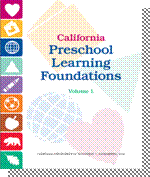 At the center of the California Early Learning and Development System are learning foundations. The foundations describe competencies—knowledge and skills—that all young children typically learn with appropriate support. They identify key domains of learning, and the knowledge and skills that teachers seek to help children acquire through intentional teaching.
At the center of the California Early Learning and Development System are learning foundations. The foundations describe competencies—knowledge and skills—that all young children typically learn with appropriate support. They identify key domains of learning, and the knowledge and skills that teachers seek to help children acquire through intentional teaching.
The chapter on social emotional development foundations can be found on pp. 1-45.
Curriculum Frameworks
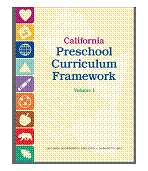
Aligned with the foundations, the curriculum frameworks provide general guidance on planning learning environments and experiences for young children. This curriculum framework is an approach to support children’s learning through environments and experiences that are:
- Developmentally appropriate
- Reflective of thoughtful observation and intentional planning
- Individually and culturally meaningful
- Inclusive of children with disabilities or other special needs
The “how-to’s” it presents include setting up environments, encouraging and building upon children’s self-initiated play, selecting appropriate materials, and planning and implementing teacher-guided learning activities.
The curriculum framework provides:
- Principles for supporting young children’s learning
- An overview of key components of curriculum planning for young children, including observation, documentation, and reflection
- Descriptions of routines, environments, and materials that engage children in learning
- A sampling of strategies for building on children’s knowledge, skills, and interests
Chapter 3 of this volume addresses social emotional development, including guiding principles, environments and materials, teachable moments, interactions and strategies, and additional resources.
DRDP (Desired Results Developmental Profile)
The DRDP is an observation-based assessment instrument used to assess children’s developmental progress. The DRDP is designed to guide program staff in making and recording observations and tracking individual progress.
The DRDP© (2015) is aligned with the Preschool Learning Foundations, Volume 1.
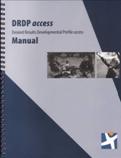 The Desired Results Developmental Profile access (DRDP access) was developed for use with preschool aged children with Individualized Education Plans (IEPs). The DRDP access allows for a wider range of development for children who are three to five years of age with disabilities. It is designed to accommodate preschool-aged children with disabilities whose developmental progress may not be adequately assessed with an instrument that begins at a developmental age of three years.
The Desired Results Developmental Profile access (DRDP access) was developed for use with preschool aged children with Individualized Education Plans (IEPs). The DRDP access allows for a wider range of development for children who are three to five years of age with disabilities. It is designed to accommodate preschool-aged children with disabilities whose developmental progress may not be adequately assessed with an instrument that begins at a developmental age of three years.
Environment Rating Scale (This is not a CDE publication, but has been adopted for use in California programs)
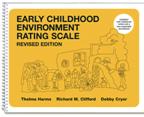 The Environment Rating Scale books, by Thelma Harms, Debby Cryer, and Richard M. Clifford, published by Teachers College Press, are “designed to assess process quality in an early childhood or school age care group. Process quality consists of the various interactions that go on in a classroom between staff and children, staff, parents, and other adults, among the children themselves, and the interactions children have with the many materials and activities in the environment, as well as those features, such as space, schedule and materials that support these interactions.”
The Environment Rating Scale books, by Thelma Harms, Debby Cryer, and Richard M. Clifford, published by Teachers College Press, are “designed to assess process quality in an early childhood or school age care group. Process quality consists of the various interactions that go on in a classroom between staff and children, staff, parents, and other adults, among the children themselves, and the interactions children have with the many materials and activities in the environment, as well as those features, such as space, schedule and materials that support these interactions.”
“The scales have items to evaluate Physical Environment; Basic Care; Curriculum; Interaction; Schedule and Program Structure; and Parent and Staff Education. The scales are suitable for use in evaluating inclusive and culturally diverse programs. The scales have proven reliability and validity.” (http://www.fpg.unc.edu/~ECERS/)
See especially items 3, 5, 9, 18, 28, 31, 32, 33, and 36.
Learning and Development Guidelines
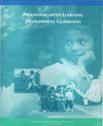 The Prekindergarten Learning and Development Guidelines is a user-friendly resource that can help administrators, teachers, and policy makers identify elements necessary for providing quality programming for children prior to their entry into kindergarten. The Guidelines are an essential part of the California Department of Education's (CDE) overall plan to expand and increase access to quality preschool programs for young children.
The Prekindergarten Learning and Development Guidelines is a user-friendly resource that can help administrators, teachers, and policy makers identify elements necessary for providing quality programming for children prior to their entry into kindergarten. The Guidelines are an essential part of the California Department of Education's (CDE) overall plan to expand and increase access to quality preschool programs for young children.
The guidelines bring together information that program administrators and teaching staff can use to prepare appropriate learning environments for children. The foundational skills children should acquire in prekindergarten programs are identified in the guidelines and carefully linked with the California State Board of Education adopted standards for both language arts and mathematics. The guidelines address current issues in early childhood education, such as language acquisition, the role of the teacher, and the learning environment. There is also a useful resource section.
See especially pages 16, 23 and 85-94.
Preschool English Learners Resource Guide
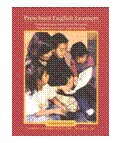 The English-language development (ELD) foundations describe what children whose home language is not English typically demonstrate at three different levels of successive English-language development. The Preschool English Learners Principles and Practices to Promote Language, Literacy, and Learning reinforces the information in the introduction to the ELD foundations, and includes additional material about family and community language practices, simultaneous second language acquisition, and supporting the English-language learner with special needs. The four stages of successive or sequential second language acquisition found in the EL Resource Guide (home language, observational/listening, telegraphic/formulaic, and fluid stages) are approximately “parallel” to the three levels in the ELD foundations: beginning level - home language and observational/listening stage; middle level - observational/listening and telegraphic/formulaic stages; and later level - fluid stage. The guide includes information on creating a supportive classroom environment, strategies to strengthen children's language acquisition, as well as the crucial role of the family in the education of English learners.
The English-language development (ELD) foundations describe what children whose home language is not English typically demonstrate at three different levels of successive English-language development. The Preschool English Learners Principles and Practices to Promote Language, Literacy, and Learning reinforces the information in the introduction to the ELD foundations, and includes additional material about family and community language practices, simultaneous second language acquisition, and supporting the English-language learner with special needs. The four stages of successive or sequential second language acquisition found in the EL Resource Guide (home language, observational/listening, telegraphic/formulaic, and fluid stages) are approximately “parallel” to the three levels in the ELD foundations: beginning level - home language and observational/listening stage; middle level - observational/listening and telegraphic/formulaic stages; and later level - fluid stage. The guide includes information on creating a supportive classroom environment, strategies to strengthen children's language acquisition, as well as the crucial role of the family in the education of English learners.
Refer especially to the following principles:
#1. The education of English learners is enhanced when preschool programs and families form meaningful partnerships p. 16
#2. Children benefit when their teachers understand cultural differences in language use and incorporate them into the daily routine p. 28-29
#3. Successful practices promote shared experiences in which language is used as a meaningful tool to communicate interests, ideas, and emotions p. 31
#4. Language development and learning are promoted when preschool teachers and children creatively and interactively use language p. 40
#6. Continued use and development of the child’s home language will benefit the child as he or she acquires English p. 43-44
Inclusion Works!
 Inclusion Works! is a new California Department of Education publication designed to provide guidance on proven strategies that promote belonging and inclusion for all children. This publication was written and developed by California Map to Inclusive Child Care director, Linda Brault. Building on research and the experience of years of effective implementation, this handbook contains stories and examples, as well as background information and resources that support strategies for successful inclusion. Suggestions for ways to adapt the environment are provided, along with examples of inclusive strategies. A glossary and appendixes make this handbook a practical tool for care providers.
Inclusion Works! is a new California Department of Education publication designed to provide guidance on proven strategies that promote belonging and inclusion for all children. This publication was written and developed by California Map to Inclusive Child Care director, Linda Brault. Building on research and the experience of years of effective implementation, this handbook contains stories and examples, as well as background information and resources that support strategies for successful inclusion. Suggestions for ways to adapt the environment are provided, along with examples of inclusive strategies. A glossary and appendixes make this handbook a practical tool for care providers.
Chapter 3, Creating Inclusive Child Care Settings, is a useful resource for ideas on how to support the child with special needs in an inclusive program.
